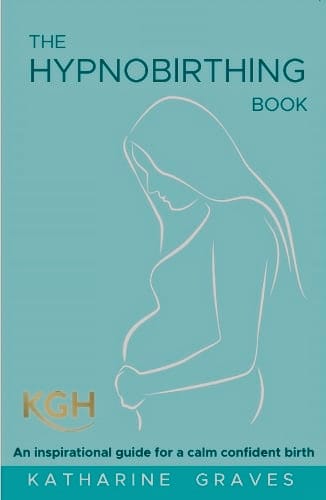The term ‘hypnobirthing’ is unfortunate because it sounds a bit woo-woo and ‘new-agey’, but it is probably the biggest childbirth red pill one can swallow.
It’s not ‘evil’ or ‘Eastern’ or whatever; instead, it stands in precise opposition to what the medical establishment has done to childbirth over the last hundred years.
Hypnobirthing is simply about changing one's mindset.
When a woman is relaxed and confident, her body knows how to birth naturally. Hypnobirthing transforms fear into love and pain into pleasure.
—Katherine Graves, author of Hypnobirthing
On the topic of childbirth, I recommend listening to two of my recent podcasts:
- Stuart Fischbein on why hospital births are not safer than home births, and
- Anthony Levatino on why he stopped performing abortions.
Both of the above conversations are eye-opening.
What is hypnobirthing?
According to AI:
Hypnobirthing is a childbirth method that uses relaxation, breathing, and visualisation techniques to help women stay calm and in control during labour. It teaches expectant mothers to trust their bodies and reduce fear, which can make labour less painful and more positive. It’s considered superior because it lowers stress, often shortens labour, and reduces the need for medical interventions, leading to a more natural and empowering birth experience.
Yes, that's quite accurate, I'd say.
Hypnobirthing is a way to make labour calmer and more positive.
It blends self-hypnosis (hence the name), relaxation techniques, and education about childbirth. The main idea is that by reducing fear and anxiety, women can handle pain better and have a smoother labour experience.
Childbirth is a multi-billion-dollar industry founded on fear and over-medicalisation.

If you can ignore Ricky Lake’s annoying style, do yourself a favour and watch her surprisingly good documentary, The Business of Being Born, which exposes the money-making machine that the childbirth industry has become.
Two books my wife and I have read, which I strongly recommend, are:
- The Hypnobirthing Book (2021), by Katherine Graves
- Spiritual Midwifery (1976), by Ina May Gaskin
The first provides a comprehensive overview of hypnobirthing, from breaking down mainstream fear porn, to practical exercises including breathing and thinking, and explaining why childbirth is a natural process and not a medical condition.
The second is a collection of beautifully uplifting stories from women who gave birth outside the medical system.

A word on self-hypnosis
When the term ‘self-hypnosis’ is used in the context of hypnobirthing, it isn’t some dodgy, trance-like caricature of itself.
When I first heard the term, I had to remove the notion that was inserted into my head as a kid, which was that hypnosis is necessarily a gateway to demonic infiltration and all that.
⚠️ It’s simply about shifting one’s mindset from negativity to positivity.
Like I said, the word hypnobirthing is unfortunate.
I’ve been a member of the Mavericks Project for years, a global network founded by guys I know, buffering against central control. They don't accept all applications because they focus on quality, not quantity.
However, I speak from experience because when my wife was pregnant, she and I read books on hypnobirthing (especially the two listed above), listened to podcasts about it, and attended hypnobirthing classes.
- It changed how we view childbirth.
- It improved my wife’s labour.
- It shortened my wife’s labour.
- My wife wasn’t scared or worried.
Because she changed her mindset.
It’s about knowing what can go wrong, while recognising that such occurrences are unlikely, despite what the medical establishment wants you to believe.
Just think about it: Why would childbirth be dangerous?
It makes absolutely no sense.
Bringing life into the world is not about death. Elephants don't randomly die when giving birth, so why should humans?
Yes, there are exceptions, but they don't make the rule.
🎙️ Podcast episode
Tara Menzies runs ChristianHypnobirthing.com, a great resource and app for hypnobirthing from a Christian perspective.







